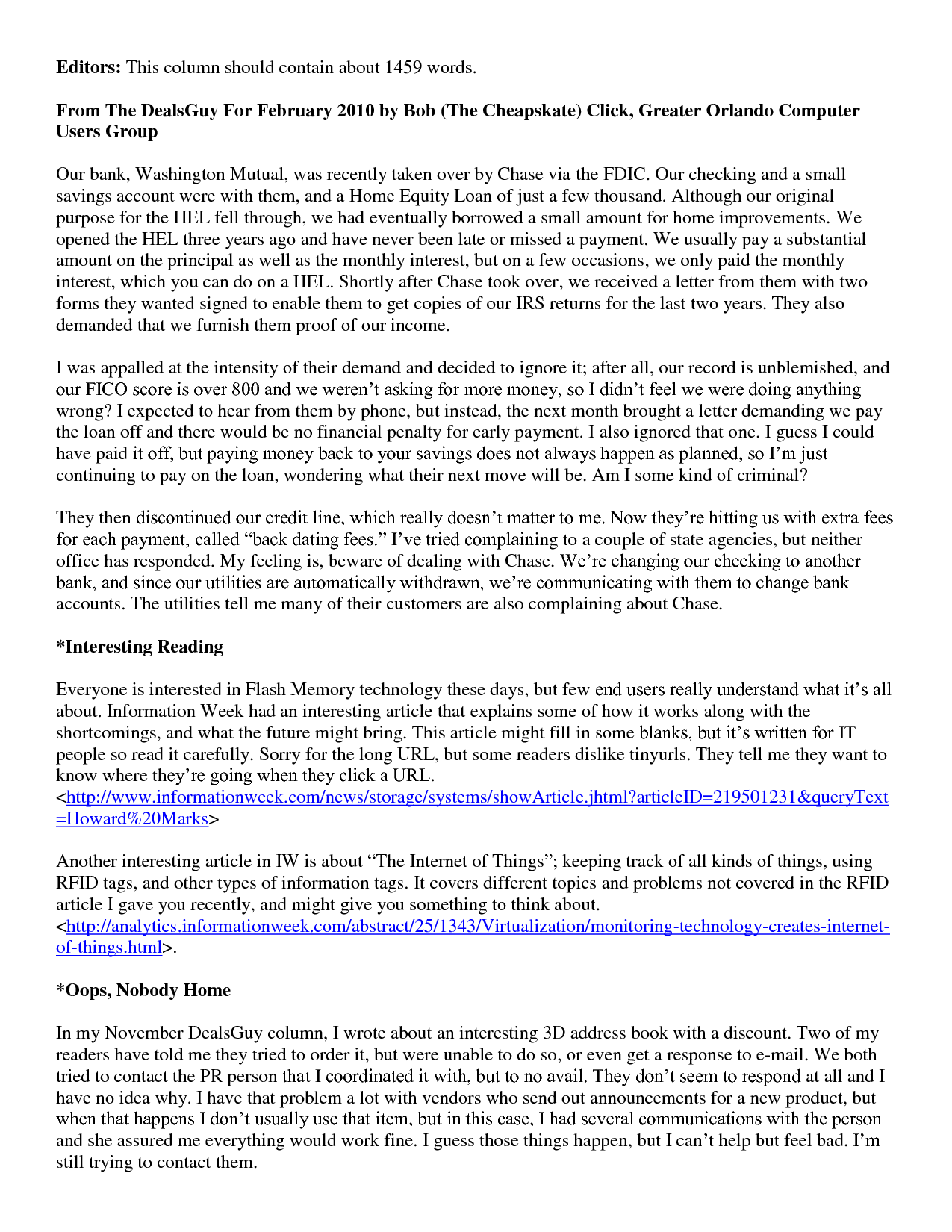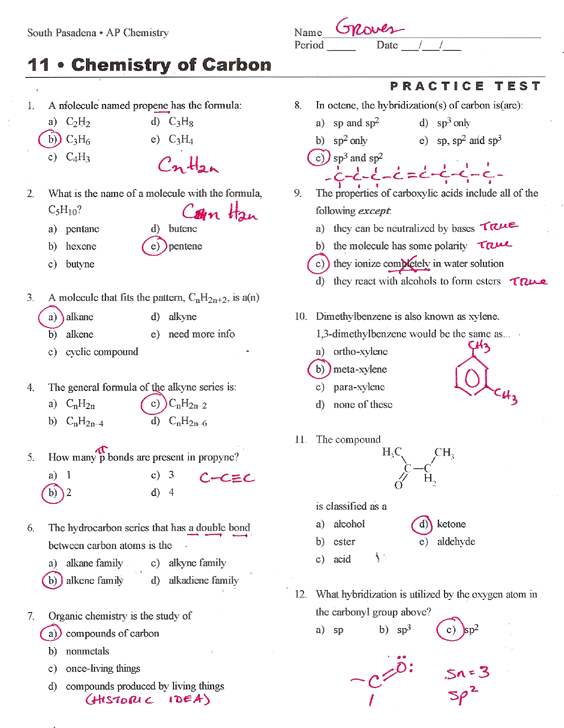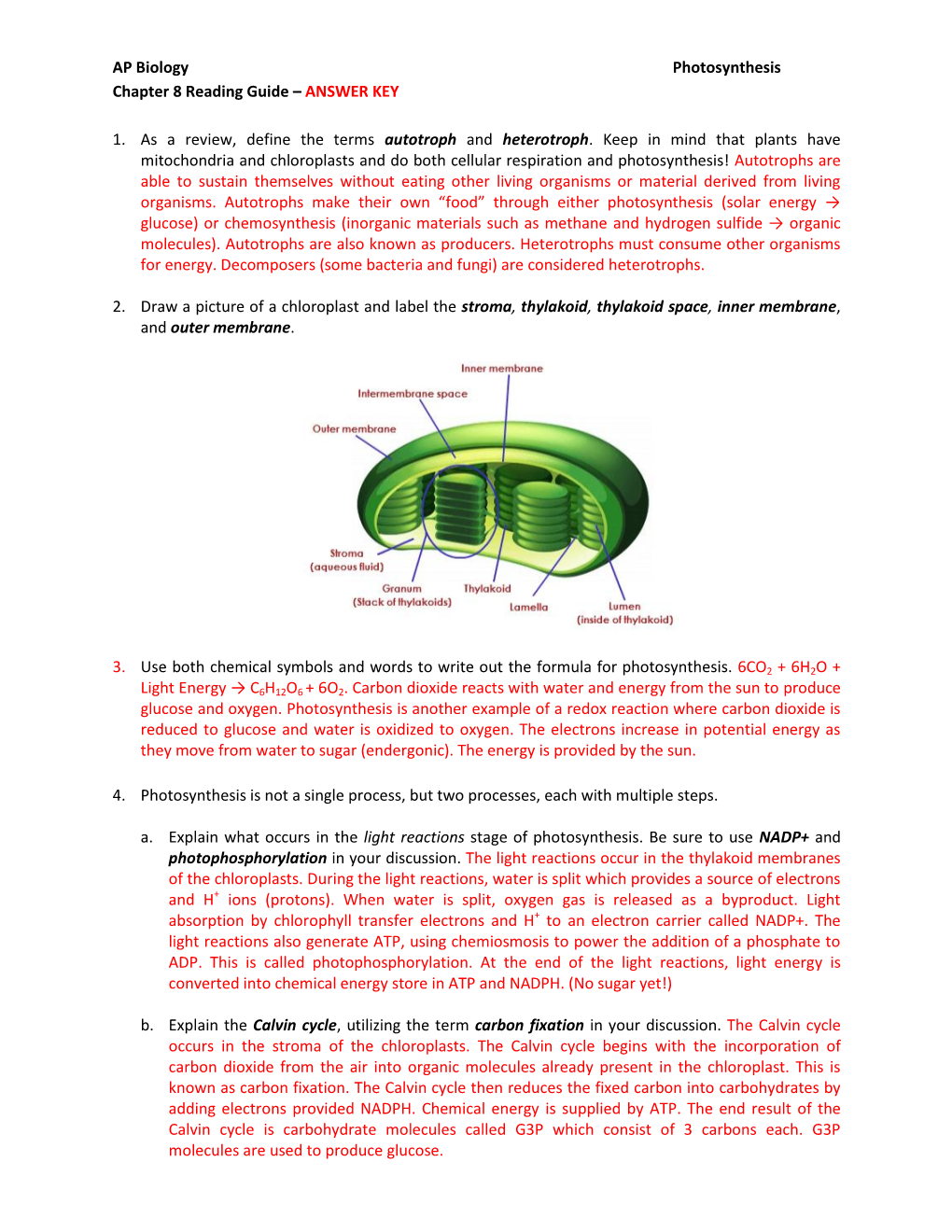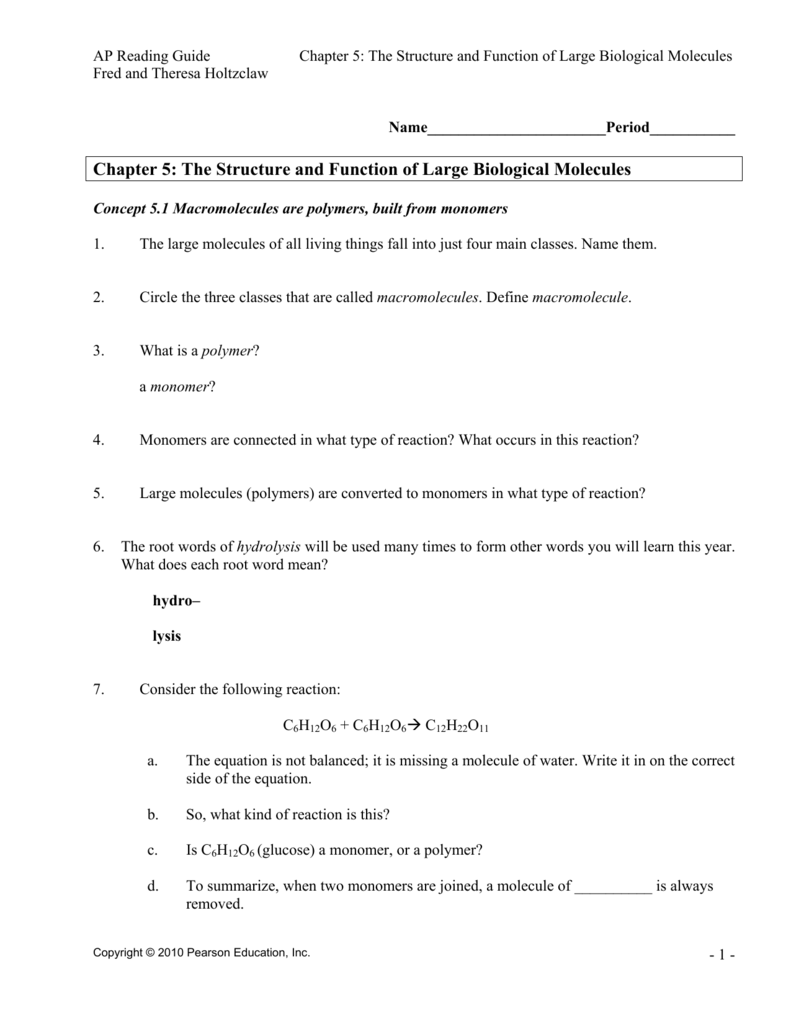Ap Biology Chapter 8 Reading Guide Answer Key
Ap Biology Chapter 8 Reading Guide Answer Key - Web learn test match created by letia_snorden terms in this set (41) which reactions release energy? Keep in mind that plants have mitochondria and chloroplasts and do both cellular. Introduction in the study of life 2. By what process will that bond break? As a review, define the terms autotrophand heterotroph. As a review, define the terms autotroph and heterotroph.keep in mind that plants have mitochondria and chloroplasts and do both cellular. Catabolic which reactions consume energy? Web created by zkg123 terms in this set (72) metabolism the totality of an organism's chemical reactions metabolic pathway what is this called? Catabolic pathways degradative processes that release energy by breaking down complex molecules into simpler compounds anabolic pathways. The chemical context of life 3.
Web ap biology reading guide chapter 8: Web ap biology reading guide fred and theresa holtzclaw chapter 8: Anabolic which reactions build up larger. By what process will that bond break? Catabolic pathway a metabolic pathway that releases energy by breaking down complex. Anabolic what type of reaction is photosynthesis? Introduction in the study of life 2. Catabolic which reactions are considered uphill? Keep in mind that plants have mitochondria and chloroplasts and do both cellular. Web created by zkg123 terms in this set (72) metabolism the totality of an organism's chemical reactions metabolic pathway what is this called?
The chemical context of life 3. By what process will that bond break? Introduction in the study of life 2. Web ap biology reading guide fred and theresa holtzclaw chapter 8: Web ap biology chapter 8 reading guide answer key mostly student exploration unit conversions answer key pdf getting get, create, make and sign cellular respiration gizmo answer key. As a review, define the terms autotrophand heterotroph. Catabolic what type of reaction is cellular respiration? Web (1) the overall flow and transformation of energy in an organism. Catabolic which reactions are considered uphill? (2) the study of how energy flows through organisms.
AP Biology Chapter 8 Study Test Question Answers
The chemical context of life 3. As a review, define the terms autotroph and heterotroph. An introduction to metabolism fred and theresa holtzclaw a. Catabolic pathway a metabolic pathway that releases energy by breaking down complex. Synthesis of macromolecules, breakdown of macromolecules, and control of enzyme activity 2.
12 Best Images of Modern Biology Worksheet Answers Metric System
Web ap biology reading guide fred and theresa holtzclaw chapter 8: Keep in mind that plants have mitochondria and chloroplasts and do both cellular. As a review, define the terms autotroph and heterotroph.keep in mind that plants have mitochondria and chloroplasts and do both cellular. Web andhra pradesh scert ap state board syllabus 8th class biology study material guide pdf.
AP Biology Reading Guide Chapter 12 Mitosis Ciclo celular
Catabolic pathway a metabolic pathway that releases energy by breaking down complex. Web learn test match created by letia_snorden terms in this set (41) which reactions release energy? Anabolic what type of reaction is photosynthesis? Keep in mind that plants have mitochondria and chloroplasts and do both cellular. Web correct answer e.
chapter 10 ap biology reading guide answers
Web ap biology reading guide chapter 8: An introduction to metabolism fred and theresa holtzclaw a. Synthesis of macromolecules, breakdown of macromolecules, and control of enzyme activity 2. Keep in mind that plants have mitochondria and chloroplasts and do both cellular. Web ap biology reading guide fred and theresa holtzclaw chapter 8:
Chapter 17 Ap Bio Reading Guide Answers / MASTERING BIOLOGY CHAPTER 9
Keep in mind that plants have mitochondria and chloroplasts and do both cellular. By what process will that bond break? As a review, define the terms autotroph and heterotroph. Web which reactions break down molecules? Web andhra pradesh scert ap state board syllabus 8th class biology study material guide pdf free download, 8th class biology textbook solutions in english medium.
AP Biology Photosynthesis Chapter 8 Reading Guide ANSWER KEY 1 DocsLib
Catabolic which reactions consume energy? Catabolic which reactions are considered uphill? Keep in mind that plants have mitochondria and chloroplasts and do both cellular. By what process will that bond break? Anabolic which reactions build up larger.
Ap Bio Chapter 12 Reading Guide Answers / 2 Regulation of gene ap
Web ap biology reading guide fred and theresa holtzclaw chapter 8: An introduction to metabolism a. Web ap biology reading guide chapter 8: Catabolic which reactions consume energy? Synthesis of macromolecules, breakdown of macromolecules, and control of enzyme activity 2.
Chapter 6 Ap Biology Reading Guide Answers Openstax Reading Guides
Synthesis of macromolecules, breakdown of macromolecules, and control of enzyme activity 2. Anabolic what type of reaction is photosynthesis? An introduction to metabolism a. Catabolic pathway a metabolic pathway that releases energy by breaking down complex. Catabolic which reactions consume energy?
Ap Biology Chapter 19 Reading Guide Answers Guided Reading Activity 1
Explain the name atp by listing all the molecules that make it up. Catabolic what type of reaction is cellular respiration? Web correct answer e. An introduction to metabolism fred and theresa holtzclaw a. By what process will that bond break?
Keep In Mind That Plants Have Mitochondria And Chloroplasts And Do Both Cellular.
Web created by zkg123 terms in this set (72) metabolism the totality of an organism's chemical reactions metabolic pathway what is this called? As a review, define the terms autotroph and heterotroph. The chemical context of life 3. Anabolic which reactions build up larger.
Web Correct Answer E.
By what process will that bond break? Which term most precisely describes the cellular process of breaking. Keep in mind that plants have mitochondria and chloroplasts and do both cellular. Explain the name atp by listing all the molecules that make it up.
Catabolic What Type Of Reaction Is Cellular Respiration?
Web ap biology chapter 8 reading guide answer key mostly student exploration unit conversions answer key pdf getting get, create, make and sign cellular respiration gizmo answer key. By what process will that bond break? Web which reactions break down molecules? An introduction to metabolism fred and theresa holtzclaw a.
As A Review, Define The Terms Autotrophand Heterotroph.
Web learn test match created by letia_snorden terms in this set (41) which reactions release energy? Web ap biology reading guide fred and theresa holtzclaw chapter 8: Introduction in the study of life 2. (2) the study of how energy flows through organisms.









